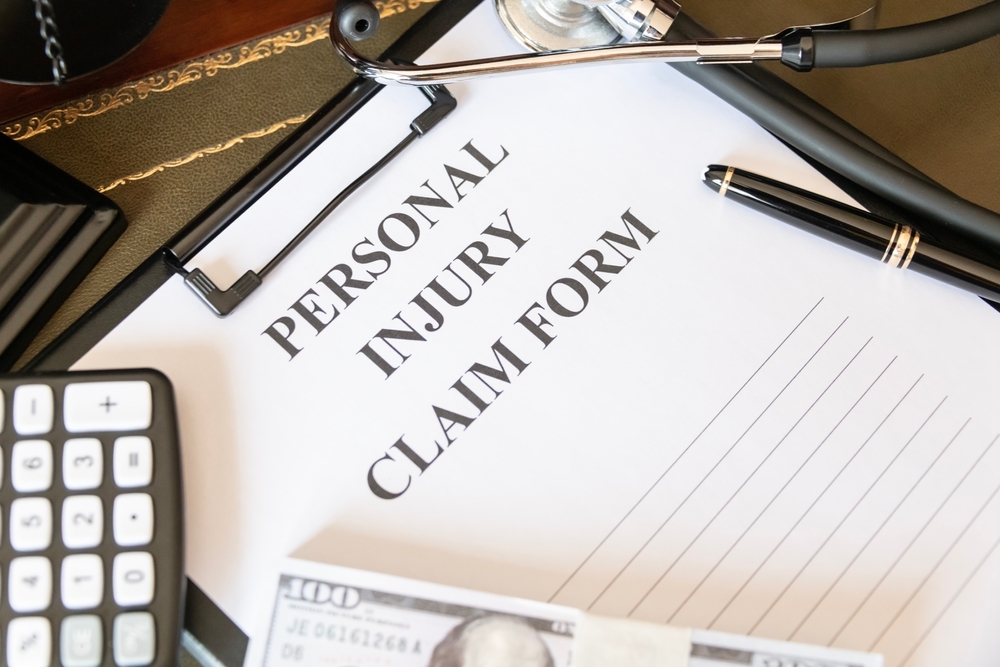You finally sit down at your kitchen table, a stack of mail in front of you. The crash on Lake Shore Drive a few weeks ago still plays back in your mind. You open a letter from the other driver’s insurance company and your stomach drops.
The amount they offer doesn’t even begin to cover your hospital stay, let alone the physical therapy you need. This is a frustrating reality for many people who are injured in an accident with an underinsured driver. It feels like a dead end, a deeply unfair twist after everything you’ve already been through.
But you have other options to help cover the costs that the at-fault driver’s policy won’t—and speaking with an Uninsured Car Accident Attorney in Chicago can be the first step toward finding real solutions.
The Financial Puzzle: What ‘Underinsured’ Really Means in Chicago
First, let’s clear up a common point of confusion. An “underinsured” driver is different from an “uninsured” driver. An uninsured driver has no car insurance at all.
An underinsured driver has insurance, but their policy’s liability limits are too low to cover the full extent of your injuries and losses. In Illinois, all drivers must carry a minimum amount of liability coverage.

Liability coverage pays for the other person’s injuries and property damage when you cause an accident.
- Bodily Injury Liability: $25,000 per person injured in an accident.
- Total Bodily Injury Liability: $50,000 per accident, no matter how many people are hurt.
- Property Damage Liability: $20,000 per accident for damage to the other person’s vehicle or property.
This is precisely the scenario where you have been injured in an accident with an underinsured driver. Another frustrating aspect is how unreliable this information is. Laws and statutes change, and the only avenue for accurate information is through an experienced attorney.
The Key to Recovery When Injured in an Accident with an Underinsured Driver
When the other driver’s policy isn’t enough, the next place to look is often your own auto insurance policy. This is where a specific type of coverage, called Underinsured Motorist (UIM) coverage, becomes your most valuable asset.
What Is Underinsured Motorist (UIM) Coverage?
Underinsured Motorist coverage, or UIM, is a part of your own car insurance that steps in to bridge the gap when the at-fault driver’s insurance is exhausted. Think of it as a safety net that you purchased for yourself.
Illinois law requires insurance companies to offer you this coverage, and it typically matches the limits you carry for yourself. UIM coverage helps pay for the same types of losses that the at-fault driver’s insurance would have covered if it had been sufficient.
These losses are legally referred to as damages (the financial and personal costs you’ve suffered because of the accident).
- Medical Expenses: This includes everything from the initial ambulance ride and emergency room visit to ongoing physical therapy, surgeries, and future medical needs.
- Lost Wages: If your injuries prevent you from working, UIM helps compensate for the income you’ve lost. This also includes loss of future earning capacity if you cannot return to your previous job.
- Pain and Suffering: This compensates you for the physical pain, emotional distress, and general loss of quality of life resulting from the accident.
How to Find Out If You Have UIM Coverage
Finding this information is straightforward. You will want to look at your policy’s “declarations page,” which is usually the first page or two of your insurance documents. It provides a summary of your coverages and their limits.
- Locate Your Policy Documents: Find the physical copy mailed to you or log in to your insurance provider’s online portal. Most companies have their documents readily available for download.
- Find the Declarations Page: Scan the document for a section titled “Declarations,” “Coverage Summary,” or something similar.
- Look for “Underinsured Motorist” (UIM): You will see a list of coverages. Look for “Underinsured Motorist Bodily Injury” or “UIM.” Next to it, you will see the coverage limits, often written as two numbers, like 100/300 ($100,000 per person, $300,000 per accident).
Steps to Take After Being Injured in an Accident with an Underinsured Driver
Once you are home from the hospital or doctor’s office and have had a moment to breathe, the process of handling the insurance claims begins. Staying organized makes a significant difference during this overwhelming time.
Initial Actions at Home
After getting the immediate medical attention you need, your focus should shift to documenting everything. Trying to recall details weeks or months later is difficult, especially after a traumatic event.
- Create a File: Get a folder or a dedicated digital folder to store everything related to the accident. This includes the police report, medical bills, receipts for prescriptions, the other driver’s information, and photos you took at the scene.
- Notify Your Insurance Company: You have a duty to inform your own insurance provider about the accident, even if you were not at fault. Explain what happened calmly and factually. Do not give a recorded statement until you have had a chance to fully understand your rights and the details of your UIM coverage.
- Keep a Journal: Document your recovery process. Note your pain levels, any difficulties with daily tasks, doctor’s appointments, and how the injuries are affecting your life. This is valuable for demonstrating the extent of your pain and suffering later.
How a Claim Works When You’re Injured in an Accident with an Underinsured Driver
The process for getting compensation in this situation typically involves two main phases. First, you deal with the at-fault driver’s insurance. Second, you turn to your own UIM coverage.

- File a Claim Against the At-Fault Driver: You (or an attorney on your behalf) will first file a claim against the underinsured driver’s insurance policy. The goal is to recover the maximum amount available under their policy limits. For example, if they have the $25,000 minimum, you will pursue that full amount.
- Obtain a Settlement Offer: Their insurance company will investigate the claim and, assuming their driver was clearly at fault, will eventually offer their policy limit.
- Notify Your Insurer of the Offer: Before you accept the settlement from the at-fault driver’s insurance, you must notify your own insurance company. They have a right to know about this because it directly affects your UIM claim. They may have specific procedures you need to follow.
Once you have received the maximum amount from the at-fault driver’s policy, you can then formally open a UIM claim with your own provider to cover the remaining damages.
Pursuing Compensation for Your Injuries
Knowing what you can claim is a key part of the process. The goal of a personal injury claim is to make you “whole” again, at least from a financial standpoint.
Damages
As mentioned, “damages” are the costs and losses you have suffered. They are generally broken down into two categories.
- Economic Damages: These are the losses with a clear dollar amount. They include your current and future medical bills, lost income from being unable to work, and damage to your vehicle.
- Non-Economic Damages: These are intangible losses that don’t have a simple price tag. This includes your physical pain, emotional anguish, scarring or disfigurement, and the overall impact on your enjoyment of life. Calculating these damages is more complex and often a point of contention with insurance companies.
Policy Limit
A policy limit is the maximum amount an insurance company will pay for a single claim or accident. If your UIM policy limit is $100,000, that is the most your own insurance company will pay for your injuries, minus the amount you received from the at-fault driver’s policy. For example, if you get $25,000 from the other driver, you could then pursue up to $75,000 from your own UIM coverage.
Common Hurdles and How to Prepare for Them
Even though you are dealing with your own insurance company for a UIM claim, the process is not always smooth. It is an adversarial process, meaning the insurance company’s financial interests are opposite to yours.
Their goal is to pay out as little as possible.
Your Insurance Company is Still a Business
You have paid your premiums faithfully, perhaps for years. You might expect your insurer to be completely on your side. While they are obligated to handle your claim in good faith, they are also a for-profit business.
Be prepared for potential tactics designed to minimize their payout.
- A Quick, Low Offer: The adjuster might offer you a fast settlement, hoping you will accept it before you realize the full, long-term cost of your injuries.
- Requests for Unnecessary Information: They may ask for your entire medical history, hoping to find a pre-existing condition they can use to argue that your injuries weren’t caused by the crash near Millennium Park.
- Disputing the Severity of Your Injuries: The adjuster, who is not a doctor, might downplay your medical diagnosis or question the necessity of certain treatments recommended by your physician.
The Burden of Proof is on You

When you file a UIM claim, you must prove two things: that the other driver was at fault and the full value of your damages. This requires building a strong case supported by clear evidence.
You will need to gather and present comprehensive documentation.
- Medical Records: A complete set of records from every doctor, therapist, and hospital that treated you for your accident injuries.
- Proof of Lost Income: Pay stubs, tax returns, or a letter from your employer detailing the time you missed from work and the wages you lost.
- Expert Opinions: In some cases, you may need reports from medical specialists or financial experts to project the cost of future care or your long-term loss of earning capacity.
Being injured in an accident with an underinsured driver in Chicago creates a complex web of insurance claims.
Life After Recovery
Navigating a UIM claim requires diligence and patience, but it is a path that exists to help people just like you. If you are feeling defeated after being injured in a collision and have questions about your situation, the team at Walner Law will listen.
As a trusted Chicago personal injury lawyer, we have experience helping people in Chicago with underinsured motorist claims. You can reach us at (312) 410-8496 for a no-cost conversation about your circumstances.
Frequently Asked Questions
What is the difference between underinsured and uninsured motorist coverage?
They are two separate coverages that address different problems.
- Uninsured Motorist (UM) Coverage: This applies when the at-fault driver has no insurance at all or in a hit-and-run situation where the driver cannot be found.
- Underinsured Motorist (UIM) Coverage: This applies when the at-fault driver has insurance, but their policy limits are not high enough to cover all of your damages.
What if my UIM claim is denied?
An insurance company must give you a reason for a denial in writing. If you believe your claim was wrongly denied, you may have grounds to challenge that decision. An insurance company that denies a valid claim without a reasonable basis may be acting in “bad faith,” which is a separate legal issue.
How long do I have to file a personal injury claim in Illinois?
In Illinois, the statute of limitations, which is the legal term for the deadline to file a lawsuit, is generally two years from the date of the injury. However, the deadline for filing a UIM claim with your insurance company may be different and is governed by the language in your specific policy. It is advisable to act promptly to preserve your rights.
Will my insurance rates go up if I use my UIM coverage?
In Illinois, it is illegal for an insurance company to raise your premiums for making a claim when you were not at fault for the accident. Since a UIM claim can only be made when the other driver was at fault, filing one should not result in a rate hike.


 Skip to content
Skip to content




